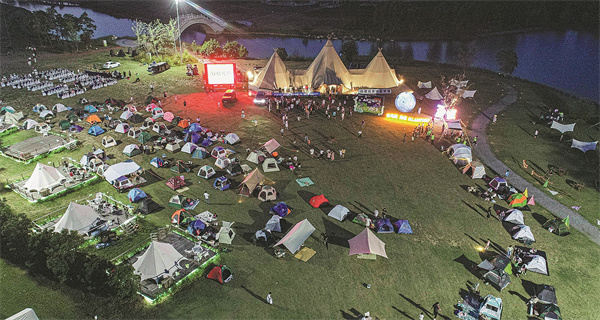

Unlike Wang, who enjoys stargazing only in cities and the nearby suburbs, and never spends time on photographing what he sees, many astronomy enthusiasts in China travel long distances to pursue the stars, especially when major astronomical phenomena occur, such as meteor showers or supermoons.
They bring their professional equipment and travel to places such as Ningxia Hui autonomous region, Gansu and Hainan provinces — locations with the best observation conditions, to capture the best picture of the stars with their cameras.
In July 2020, Qiu Han, who is well-known for snapping great photos of snowy mountains, traveled from his home in Chengdu, Sichuan province, to Yongtai county in Gansu province, to pursue a big comet.
"The whole process was spontaneous. I was amazed by other people's pictures of the comet, which was said to be the brightest in 23 years in the Northern Hemisphere," he said during an interview with local media.
"So, I booked tickets and went to chase the star, aiming to capture the best image of it. "
Qiu shot a video about his comet-chasing adventure and posted it to social media, which has, so far, been viewed more than 17,000 times.
With the development of China's astronomy education and the space industry, Chinese people have an increasing interest in stargazing, which has brought business opportunities that have gradually formed an industry.
According to a report by Xinhua News Agency published last December, statistics show that more than 30,000 astronomers and photographers rush to Ningxia every year.